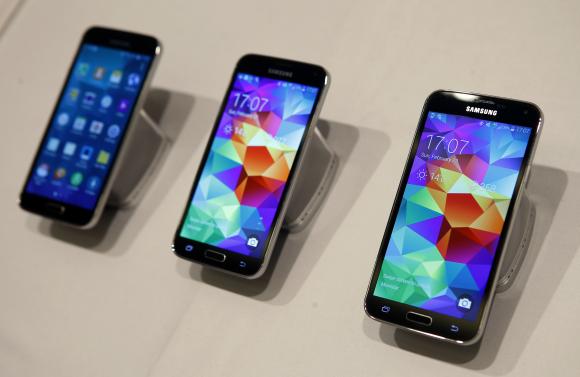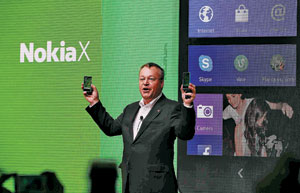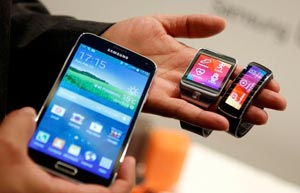Smartphone wars shift from gadgetry to price
(Agencies) Updated: 2014-02-27 09:49
|
 New Samsung Galaxy S5 smartphones are seen on a display at the Mobile World Congress in Barcelona February 23, 2014. [Photo / Agencies]
|
The mobile phone industry is now looking to the fast-growing demand for smartphones priced at $100 or below as the market for fancier high-end devices has become saturated, but not all handset makers are able or willing to trade down.
|
 |
|
 Xiaomi to launch online sale of high-end Mi3 phone in Taiwan |
Much of the talk this week at the Mobile World Congress in Barcelona, the industry's biggest annual trade fair, has turned from the latest big screen, premium-priced devices to the new, entry-level smartphones that analysts say now overwhelmingly represent the industry's best hope for growth.
"All the phones now look the same," said industry analyst Ben Wood of CCS Insight after surveying the eight vast halls of phones and other mobile gadgets on show.
"The ability of top brands like Samsung, Apple and Nokia to differentiate themselves is getting harder," he said.
Growth in global smartphone shipments will fall sharply this year and keep slowing through 2018, with average prices dropping significantly as the demand shifts to China and other developing countries, market research firm IDC said earlier on Wednesday.
So now phone makers are touting new, low-cost devices which are intended to retail at near $100 or below. This class of device has some but not all the features of the current top end smartphones, which sell for several hundreds of dollars and until this year drew nearly all the media attention and marketing spend at Barcelona.
Early leaders in this new market are Chinese players, some with global brand names and others who remain virtually unknown outside China, who have made huge strides in acquiring the technical and design expertise that enables them to now drive down the costs without necessarily sacrificing quality.
The biggest winners so far look to be Huawei , Lenovo, TCL Communications and still unfamiliar upstarts like Gionee, Oppo and CorePad that are poised to become big international names in the coming years, said Wood.
All benefit from having a home field advantage in China, the world's largest phone market.
|
 |
 |
- NHTSA says finds no 'defect trend' in Tesla Model S sedans
- WTO rare earth ruling is unfair
- Amway says 2014 China sales may grow 8%
- President Xi in Europe: Forging deals, boosting business
- CNOOC releases 2013 sustainability report
- Local production by Chery Jaguar Land Rover this year
- Car lovers test their need for speed in BMW Mission 3
- China stocks close mixed Monday

















